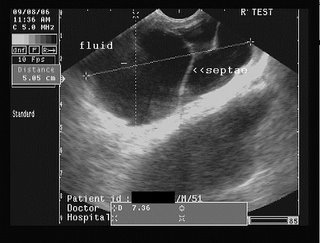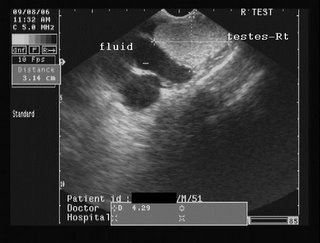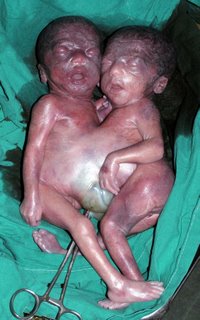
Rupture of the uterus during delivery is a known complication of pregnancy. The commonest cause is vaginal delivery after a caesarean section. Other causes include, previous surgery for tumors like fibroids and also prior classical caesareans, where the incision was placed in the upper uterus. Labor inducing medications can also cause rupture. I present ultrasound images of uterine rupture with severe hemorrhage on my ultrasound gallery at: http://drjoea.googlepages.com/ultrasoundgallery-uterus
On ultrasound scan, the typical findings are breach of the uterine wall, with a hypoechoic collection of blood outside the uterus. Follow up scans revealed diminishing of the size of the collection. One of the images of this case is shown here. Images courtesy of Dr. Durr-e-Sabih, Pakistan.
On ultrasound scan, the typical findings are breach of the uterine wall, with a hypoechoic collection of blood outside the uterus. Follow up scans revealed diminishing of the size of the collection. One of the images of this case is shown here. Images courtesy of Dr. Durr-e-Sabih, Pakistan.












